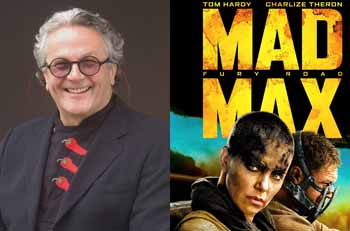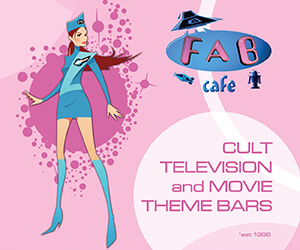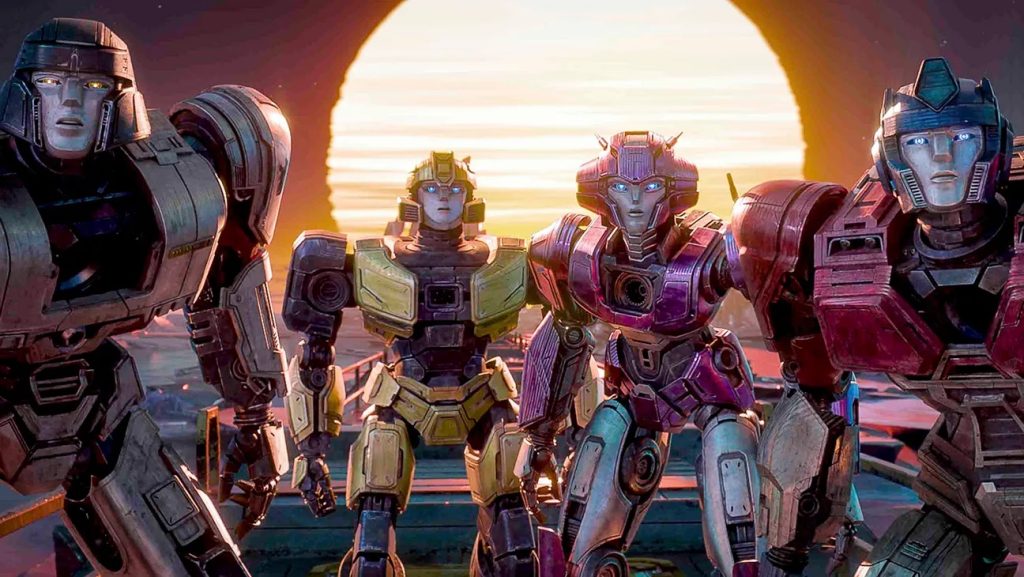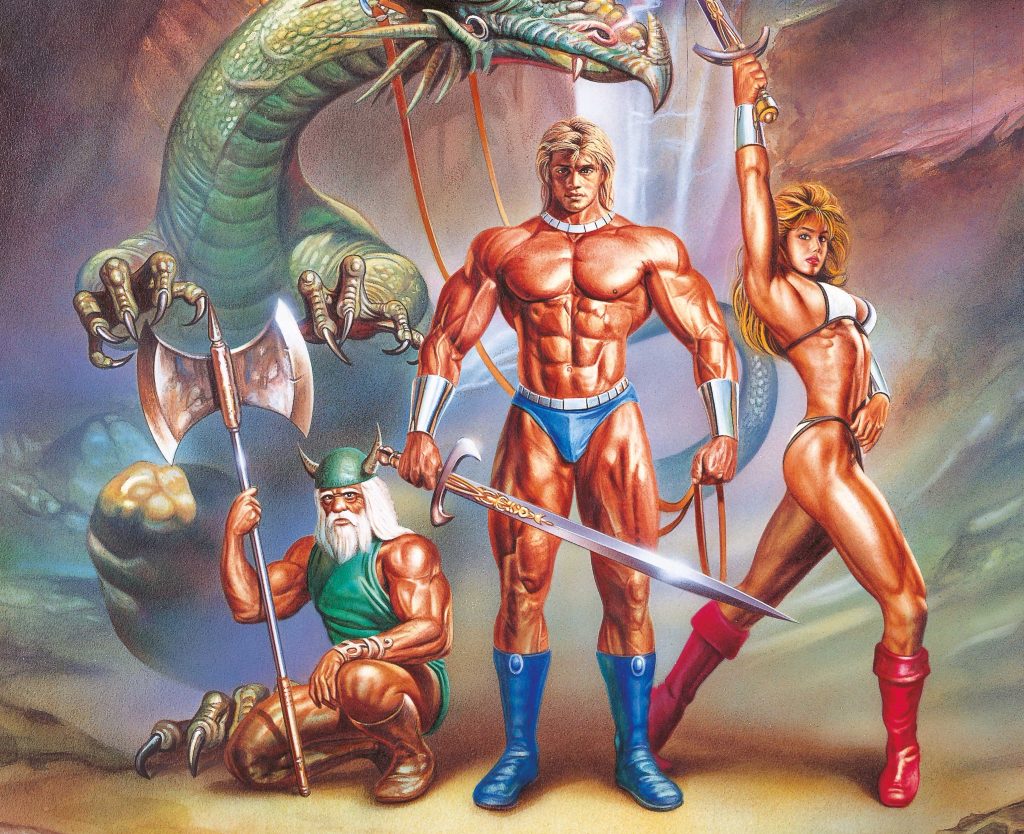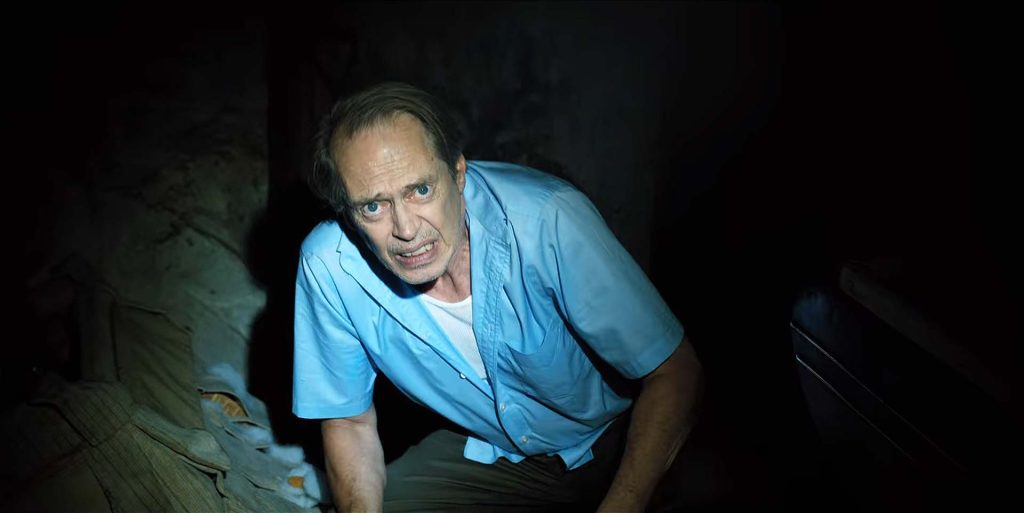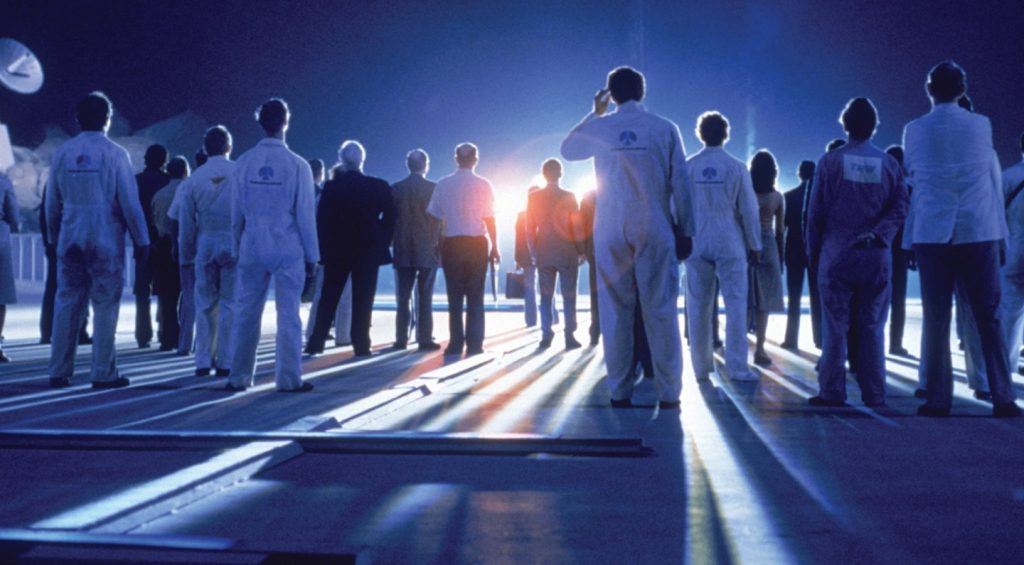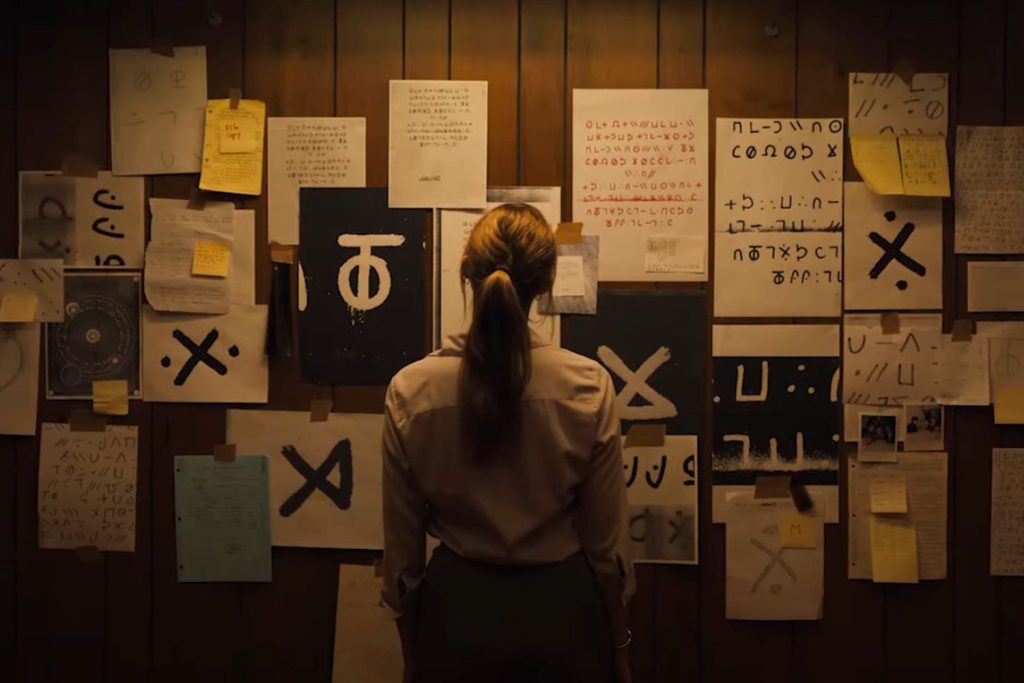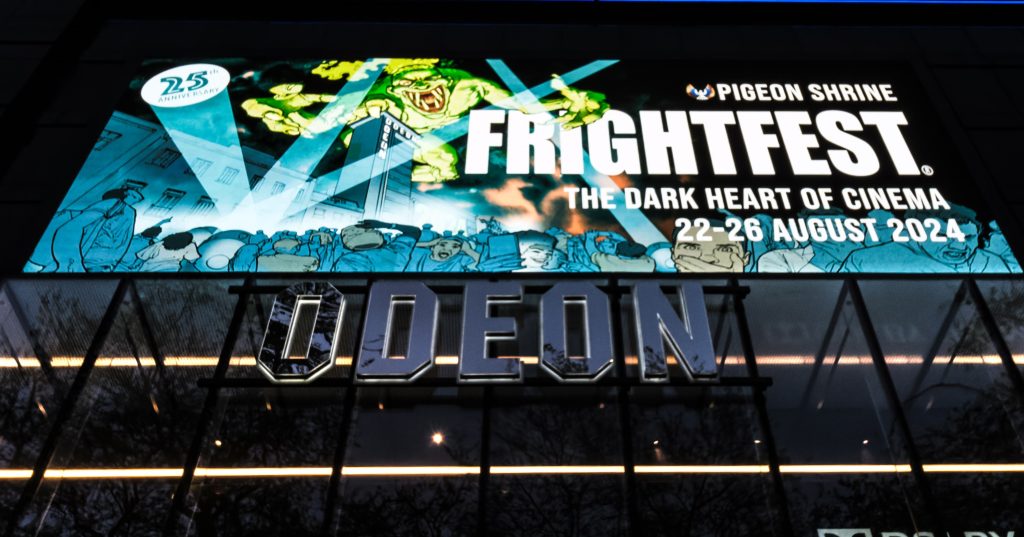 In London to promote the Mad Max: Fury Road Blu-ray release, visionary director George Miller spoke about the incredible production of the film, his version of DC’s Justice League, the cultural impact of Furiosa and finding a replacement for Mad Mel Gibson. Oh what a lovely day…
In London to promote the Mad Max: Fury Road Blu-ray release, visionary director George Miller spoke about the incredible production of the film, his version of DC’s Justice League, the cultural impact of Furiosa and finding a replacement for Mad Mel Gibson. Oh what a lovely day…
STARBURST: When did the idea for Fury Road first come to you?
George Miller: Initially, I didn’t even want to make a second Mad Max, let alone a fourth. The second one was an opportunity to do all the things I learned from the first one. An idea came to me… I remember the moment. I was crossing a street and as I was halfway across, the idea came that was a continuous chase that the essential Macguffin that people were in conflict over was to be human. A number of wives fleeing from a warlord. And they needed a champion who was a female road warrior. It had to be female. You couldn’t have a man stealing wives from another man, that’s a different story. And Max gets sucked into all of that.
18 months later, I was on a long flight from Los Angeles to Sydney in that state between sleep and wakefulness. The movie played out in my head. I got really caught up in the story. I don’t make many movies but this became an obsession. Somehow you gotta get it out there.
Was the idea always to have the characters go from point A to B and then back again?
Initially, it was just fleeing but then they ran out of places to go and the only place in The Wasteland that they could go back to was The Citadel. Which made a lot of sense because basically they had to make do with what existed. I really wanted to do a chase where you were picking up the exposition on the way. You’re learning about the characters, the back story, the interaction, the world on the run. The thing I most dread as a writer is exposition because it feels like you’re telling the audience. So much of storytelling is people explaining things. This was more about withholding information and budgeting it out as you’re going along.
By the end, you get a rich sense of clearly delineated characters, so how do you build that into the script?
Carefully. Film is made up of little bits and each piece really counts. Film really is like music. There is a strong causality from one shot, or one note to the next for it to flow. There’s almost a mathematical causality between core structure and tone and melody and tempo. When I talk to composers, I see they go through a similar process aurally as we do visually. So go out there and make sure you have enough footage to find those moments and calibrate them. It’s often in a look or a very small gesture that you’re picking up enough which allows you to read some subtext into that.
Was it helpful to take a long time out of the action genre?
When I first got into cinema and I started to struggle with the early films. The more I went on I realised that this is a craft that you could live a thousand years and never master. But you do accrue some skills and knowledge and so that was one of the exciting things… to revisit in some ways that were unique. In the thirty years that had passed, everything has changed. The world has changed. Cinema has changed. The way we read movies has changed and I’ve changed. All of those things allowed the film, providing we followed a rigorous process, to feel to some degree fresh.
One of the projects that you started was a Justice League movie, before the current superhero boom. How different would your take have been from what we are getting now?
It’s hard to gauge how different it would have been. We had a very good script, absolutely wonderful designers, really good story, and a really fine young cast. We almost got there. We had a change of government which was incredibly decisive and we were running up against a writer’s strike in America. It was ok for me because I had Happy Feet to make and this movie to make and more films on my desk that I would ever have time to make. But it was not a good thing for the cast and the Australian film industry which is kind of eclipsed by a much more rigorous industry in New Zealand for instance. Jim Cameron calls them the highest concentration of filmmakers in the world. We missed out on that by not making some of the DC franchise.
I don’t know how different it would be. I’m basically into mythology, like most people. They are the modern incarnation of the Greek and Roman gods and therefore very interesting.
How did you go about replacing Mel Gibson for Fury Road?
Well there’s a lot of precedents for this… There’s James Bond, there’s Superman, there’s Batman. We had initially started off with Mel, back at the beginning of the millennium and then 9/11 put the kibosh because the American dollar collapsed against the Australian dollar and we lost about 30% of our budget over night. I went on to Happy Feet. We regrouped and by that time, the person who reminded me of Mel Gibson 30 years before was Tom Hardy. He had that same energy, the same qualities that I recognised back then.
So Tom was six weeks old when we first started to shoot the original. He was willing to take it on. He brought a different quality to it. The character is different. He starts off as a wild animal trapped and is looking for his freedom and finally finds some degree of his humanity and some honour and some ability to regard another, Furiosa, positively.
There was a rumour of an original treatment where Max was being led around on a leash like a dog.
No, he was a blood bag from the beginning. Everyone in this movie is a commodity. And they wear the logo of the Immortan on their necks.
Was there anything that was trimmed out then?
Surprisingly little. The footage was very hard won. Everything you see, the principal image is real. Real cars, real people, real desert. The vehicles crashing. The great thing about these movies is that they are sort of shot in continuity to some degree. That’s an advantage because the story happens over three days. We shot over 138 days. So you can find a kind of continuity in the story.
As you were going along, I was sending back footage to Australia from Namibia and it was being cut together and you’re looking to trim and be efficient and you want the rigour of that process so surprisingly little actual story was lost. A few moments here and there and maybe amplification of certain scenes. But we shot digital cameras. There were a lot of cameras because we didn’t know which cameras would be damaged. In the old days, if you shot with an Arriflex or Paniflex camera and you smashed it, there goes a quarter of a million dollars. Nowadays, a lot of the cameras were simple Canon cameras which we could go to the airport in Africa and buy another for $1500. And the footage is all on a card and each card has 40 minutes of footage. So we shot an enormous amount of footage. A lot of it was wasted, but because the battles or the events were staged for real, with many vehicles, we just put cameras everywhere. The principal cameras were basically three cameras on the key action and those extra little cameras often gave us a moment to help us bridge the cut.
And I dumped all this material on Margaret Sixel the editor back in Australia who also happens to be my life partner. And she still hasn’t forgiven me. 480 hours of footage. That’s three weeks of continuous viewing without sleep. And she had to get two hours out of it. But they were the right two hours and they were the best two hours.
Were there any particular directors or films that inspired you?
You start with Buster Keaton and you go to John Ford and you go to Hitchcock and Spielberg, the classic action sequences like the chariot race in Ben Hur which took six months to shoot. Bullit, French Connection… Duel was a highly influential film to me. I don’t know how Steven had that in him at such a young age. And so on and so on. I’m very interested in the Pixar filmmakers and their use of camera and montage. It’s an acquired language and a cultural evolution and I think everyone contributes in some way.
While you were writing and casting, did you have any idea how quickly Furiosa would become a cultural icon for feminism in contemporary film?
Um… no. No I didn’t. It’s kind of a weird responsibility after a while and it really hits home to me when people show me tattoos of the characters already. I think ‘oh my god, what if the film has no enduring qualities’. A critic in Japan said he’d seen the film twice. He had deep insight into the movie. I was astonished by how deeply he read the movie. I said ‘you’ve taught me things about this movie that had never even occurred to me’. He took me to a corner and said ‘I wanted to show you what the movie meant to me’ and he opened up his shirt and he had the Immortan’s logo on his chest.
But it arose out of the mechanics of the story. Five wives being basically dragged across the wasteland by a warrior. It had to be a woman road warrior. Suddenly the architecture of this story reveals the character. Then you get really lucky that there’s an actor like Charlize who’s got the stature physically and she’s got the spirit. She was an accomplished ballet dancer when she was young so she’s got all that discipline and she’s able to take on something like that. She was the one who shaved her hair because she said the character wouldn’t mess with hair out there in the dust and the heat. It comes out of story even though unconsciously I think we do interact with the zeitgeist and it’s in the air anyway.
How was it for the actors working as such small pieces in such a huge spectacle?
That was very difficult when you have someone like Tom who’s come from the theatre with moment to moment continuity. The performance is the complete opposite with close to 3000 cuts in this movie. How does an actor get any continuity? First of all we shot as much as possible in story sequence. There’s a lot of reasons for that. Secondly, we obviously talked a lot about it before hand. There was no table reading because there wasn’t much dialogue. There was rehearsal and then we had a kind of deal going where often I would be in a vehicle, for instance this thing called the Edge Arm which was a camera with a crane that could basically go anywhere which was like being in the middle of a video game and we had speakers inside the vehicle. Everyone had to be hooked up, all the stunt crew with ear wigs. We had this thing going where we’d do one take. We’d say reset and do another because we had endless landscape. So we’d do maybe 10 takes and I couldn’t give notes but I could go back and revisit them and make notes when we got to one end and then we’d come back and do it the other way. That’s way it was so difficult to get those little pieces so finely calibrated in the editing room.
It’s a tough thing for actors to do, but I think it’s more immediate and more real being out in there in the desert with real dust and real wind and real heat and real vehicles so you can smell the fuel. It gets into you rather than doing it green screen where you’re fighting imaginary monsters. It creeps into them. But we all went a little bit crazy.
Were there ever moments where you thought Furiosa was doing too much and Max too little?
That came up a lot. It just happens by instinct. I tried to work off the cliché. So whatever the trope is, I tried to come at it tangentially and keep myself and others in the audience wrong footed a little bit. Whenever there’s that opportunity, it tended to happen. I knew that Max was going to be a passive character slowly revealed. He spent the first 20 minutes with a garden hoe on his face and he mumbled his first word ‘water’, other than the voiceover at the beginning, I think 20 minutes into the movie. But that’s part of the play.
Is there anything you want to explore that you haven’t had the opportunity to yet?
So many things. I’m definitely hardwired for the imaginative life. I say to my family that if I’m the guy in a nursing home sitting in a wheelchair staring at the ceiling, I’m playing a movie in my head. There are things of course that you want to do, but it’s the stories that insist on themselves or there’s a gravitational pull that means they get made. You almost resist doing them and if you do, and you know you get obsessive about it, then you know you’re on the right track. I’d like to go into space and meet some aliens.
How long does the editing take and how is it working with your life partner on it?
Well, we were half a world away for most of it. I was in Africa and she was back with the kids who were at a critical stage of their schooling. She was free to do what she wanted to do. I mean I would give notes, but it was very, very hard. I could barely get the notes out because there was no time. So she had that first pass of the movie responding only to what was in front of her. Not what we had in the script or storyboards. Not what I wanted there to be. But simply responding very honestly and brutally to the footage in front of her.
She’s got a kind of brain that she could do a massive Rubik’s Cube. She’d never cut an action movie but what she had cut had a kind of musicality to it. And she’s got a very, very low boredom threshold. At many points she said, ‘George, my main job is to stop you making a fool of yourself’. Most editors can’t say that to me, but she could. I trusted the instinct. Partly because I knew her and I love her. But it wasn’t blinded because there was objective evidence that her cuts were more coherent, more elegant, what I call ‘creamy’ than other people who started doing some cutting on the film but couldn’t quite catch it. And indeed there were two test screenings back to back with a kind of more predictable cut against her cut. And her cut tested 20 points higher.
And it wasn’t difficult because there’s essential respect. She wasn’t invested in the movie as a career thing. She just wanted to get the best out of the footage. I like cutting but the footage means something different to you when you’ve gone through the process of shooting it. You bring all the experience of acquiring the footage with you. It’s very hard to be dispassionate. And when you have someone who is dispassionate and artful, you’re really on the right track. And she didn’t try to copy any other action movie, which is the tendency that we all have. Those things all conspired to make the best film that we could get out of those 480 hours.
Mad Max Fury Road is out now on DVD and Blu-ray.

